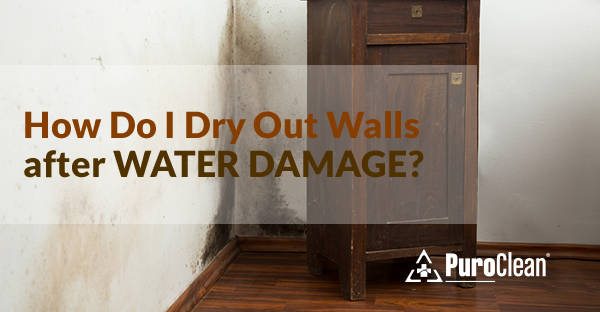Table of Contents
Property restoration guide for homeowners in the 21st century. Natural disasters, accidents, and unforeseen events can leave your home in shambles. Whether it’s water damage from a flood, fire damage from an electrical malfunction, or structural damage from a storm, the aftermath can feel overwhelming. However, with the right approach, property restoration after a disaster is possible.

Disasters can strike unexpectedly, leaving homes devastated by fire, water damage, storms, or mold infestations. Recovering from such events can be overwhelming, but with a structured approach and professional assistance, you can restore your home and reclaim a sense of normalcy.
This guide walks you through the essential steps of property restoration after a disaster, helping you navigate the recovery process effectively.
For immediate assistance with property damage restoration, contact PuroClean Home Savers, Call (+1) 614-689-0012.
Why Is Disaster Restoration Important?
- Safety First: A damaged home can pose serious risks, including structural instability, electrical hazards, and health concerns like mold or asbestos exposure.
- Preserve Property Value: Timely restoration can prevent further deterioration and maintain your home’s market value.
- Peace of Mind: Restoring your home allows you to regain a sense of normalcy after a traumatic event.
Steps to Restore Your Home After a Disaster
Assessing the Damage: The First Step to Recovery
Property restoration after a disaster is the process of repairing and rebuilding a home to its pre-damage condition. This involves addressing structural damage, cleaning up debris, and ensuring the property is safe and habitable. The goal is not just to fix the visible damage but also to prevent future issues, such as mold growth or weakened foundations. Before beginning any restoration work, it’s crucial to assess the extent of the damage. This involves:
- Conducting a Safety Inspection: Ensure the property is structurally sound before entering. Check for hazards like exposed wires, weakened walls, and gas leaks.
- Documenting the Damage: Take photos and videos of affected areas to provide evidence for insurance claims.
- Consulting Professionals: Restoration experts can provide a detailed evaluation and outline a recovery plan tailored to your specific situation.
Water Damage Restoration
Water damage from flooding, leaks, or burst pipes can lead to severe structural issues and mold growth if not addressed promptly. Key steps in water damage restoration include:
- Water Extraction: Use pumps and vacuums to remove standing water.
- Drying and Dehumidification: Industrial air movers and dehumidifiers prevent further moisture damage.
- Sanitization and Mold Prevention: Treat affected areas with antimicrobial solutions to inhibit mold growth.
- Structural Repairs: Replace water-damaged materials like drywall, flooring, and insulation.
Fire and Smoke Damage Restoration
Fires not only cause structural damage but also leave behind soot, smoke, and odors. Restoration involves:
- Debris Removal: Safely clear out charred materials.
- Smoke and Soot Cleanup: Use specialized equipment to remove residue from walls, ceilings, and ventilation systems.
- Odor Neutralization: Deploy ozone treatments and air purifiers to eliminate lingering smoke odors.
- Reconstruction: Restore or replace damaged structures and finishes.
Mold Remediation
Mold growth often follows water damage and can pose serious health risks. The remediation process includes:
- Mold Inspection and Testing: Identify affected areas and determine the severity of contamination.
- Containment and Air Filtration: Use negative air pressure to prevent spore spread.
- Mold Removal: Clean and remove mold-infested materials.
- Prevention Measures: Fix leaks and improve ventilation to prevent future mold growth.

Working with Insurance for Property Restoration
Navigating insurance claims can be challenging, but taking the right steps can streamline the process:
- File a Claim Immediately: Contact your insurance provider as soon as possible.
- Provide Documentation: Submit photos, videos, and repair estimates.
- Work with an Adjuster: An insurance adjuster will assess the damage and determine coverage.
- Choose a Trusted Restoration Company: Work with licensed professionals who have experience in insurance restoration projects.
DIY vs. Professional Restoration: When to Call the Experts
While minor repairs can be handled on your own, significant damage requires professional intervention. Hiring a certified restoration company ensures:
- Proper assessment and mitigation of hidden damages
- Safe and thorough cleanup, preventing long-term issues
- Faster restoration, reducing overall costs and inconvenience
- Compliance with building codes and insurance requirements

Preventative Measures to Minimize Future Disasters
Once your home is restored, take steps to safeguard it against future disasters:
- Install Smoke Alarms and Fire Extinguishers
- Regularly Inspect Plumbing and Roofs for Leaks
- Ensure Proper Drainage Around Your Home
- Reinforce Windows and Doors Against Storm Damage
- Maintain HVAC Systems to Prevent Mold Growth
Conclusion: Restoring Your Home, Restoring Your Life
Recovering from a disaster is a challenging journey, but with the right approach, you can restore your home and rebuild your life. By working with professionals like this, addressing damages promptly, and implementing preventative measures, you can ensure a safe and secure future for your property and loved ones. If you’re facing a disaster, don’t hesitate to seek expert assistance to get your home back to its best condition.


 PuroClean Certified Restoration Specialists
PuroClean Certified Restoration Specialists